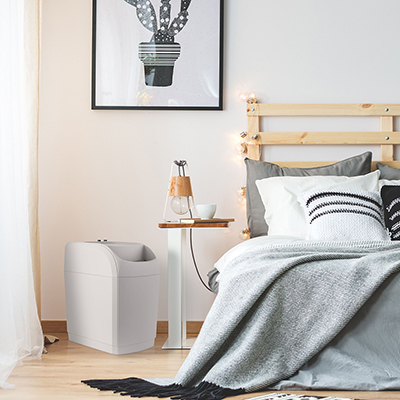Best Humidifier for Your Home

Last updated September 7, 2023
A humidifier adds moisture to the air to boost humidity back to comfortable levels, helping you keep the right level of moisture in the air throughout your home. With a variety of types of humidifiers available, it's important to understand capacity, size and humidifier benefits when looking for your new unit. This guide explains the factors to consider so you can be confident you’re selecting the best humidifiers for your needs.
Table of Contents
Things to Consider
Size
Output and Room Use
Evaporative Humidifers
Warm Mist
Ultrasonic
Things to Consider

Unlike a dehumidifer, humidifiers add moisture back into the air, and can be very helpful in dry climates or households with allergies. Here are a few options to keep in mind when learning how to choose a humidifer:
- Adjustable humidistat: Standard control system that automatically turns unit on and off to maintain a preset humidity level.
- Digital display: Digitally displays current relative humidity levels and settings.
- Timer: Programmable control that lets you set the humidifier to run at certain times of day.
- Automatic shutoff: Shuts off the humidifer when the tank is empty.
- Medicine cup: Feature on steam humidifiers that evaporates vapor medication.
- Filter sensor: System that alerts you when it's time to replace the filter.
- Dishwasher-safe tank: A tank designed for easy cleaning in the dishwasher.
- Output per day: Standard measure of a humidifier’s power, which determines how many rooms it can humidify. Some models may include a square footage or room number recommendation on the label.
- Tank capacity: Amount of water the refillable tank can hold, listed in gallons. Typically, you need to refill larger tanks less frequently than smaller tanks.
- Run time: How long the humidifier can run on a full tank of water.
- Safety listing: A guarantee that an independent testing agency such as Underwriters Laboratories (UL mark), Intertek (ETL mark) or the CSA Group (CSA mark) has ensured the unit is safe for its rated use.
- Energy Star®: A label indicating that the product meets stringent energy-efficiency guidelines as outlined by the U.S. Department of Energy and the Environmental Protection Agency.
- Consider which humidifier accessories you will need. Items like replacement wicks and pads are often needed over time.
Size
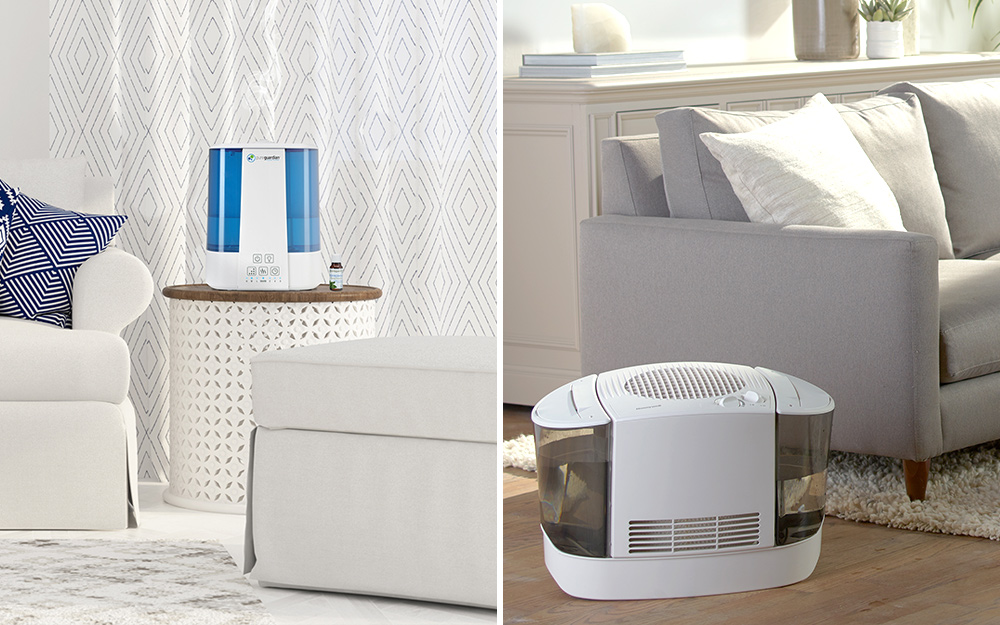
The biggest question often asked: What size humidifier do I need? To make the most of your humidifier, choose one based on the size of the room you’ll use it in.
Small room humidifiers (aka "portable" or "compact" humidifiers) are recommended for spaces 400 square feet or smaller.
- Can be used on tabletops (check manufacturer's safety warnings)
- Lightweight
Medium room humidifiers (sometimes called tower humidifiers) are recommended for spaces sized 400 to 1,000 square feet.
- Water tank requires less refilling than tabletop units
Large room humidifiers (aka console or tower humidifiers) are recommended for spaces more than 1,000 square feet.
- Use larger refillable water tank
- Provides humidify to several rooms
- Not lightweight but can still be moved throughout home
Whole house humidifiers (aka in-duct or online humidifiers):
- Introduce moisture directly into a forced air heating system
- Carry moist air to every room
Output and Room Use
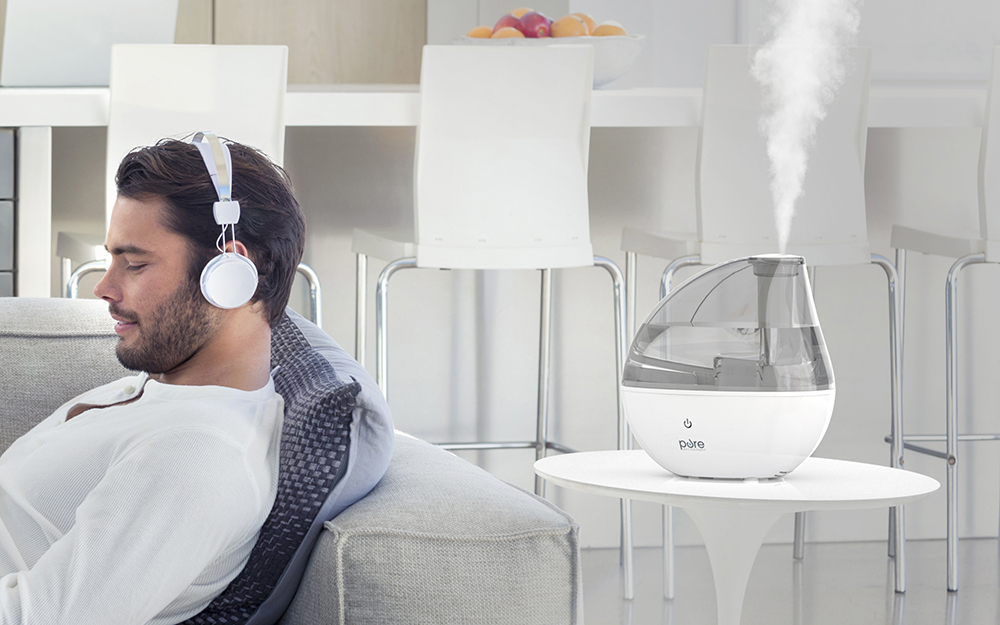
A humidifier's output range is a key attribute to understand before purchasing. Available in sizes ranging from compact to whole house, each humidifier option will have its own output range. Use this list to understand which humidifier is right for your area.
Compact humidifier:
- Typical Output Range: 0.5 to 1.5 gallons per day
- Suggested Application: Humidifying a single, small room
Tabletop humidifier:
- Typical Output Range: 2 to 4 gallons per day
- Suggested Application: Humidifying a single room
Tower humidifier:
- Typical Output Range: 2 to 4 gallons per day
- Suggested Application: Humidifying a single room
Small console humidifier:
- Typical Output Range: 6 to 8 gallons per day
- Suggested Application: Humidifying two to three rooms
Large console humidifier:
- Typical Output Range: 9+ gallons per day
- Suggested Application: Humidifying the entire floor in a large house or all rooms in a small to medium size house (2,500 to 3,000 square feet)
Whole-house humidifier:
- Typical Output Range: 9+ gallons per day
- Suggested Application: Humidifying all rooms in a medium size house (3,000 to 4,000 square feet)
Now that you understand output, it's time to figure out which type of humidifer is right for your home. Using the list below you can determine the diffence in cool mist vs. warm mist and more.
Evaporative Humidifers
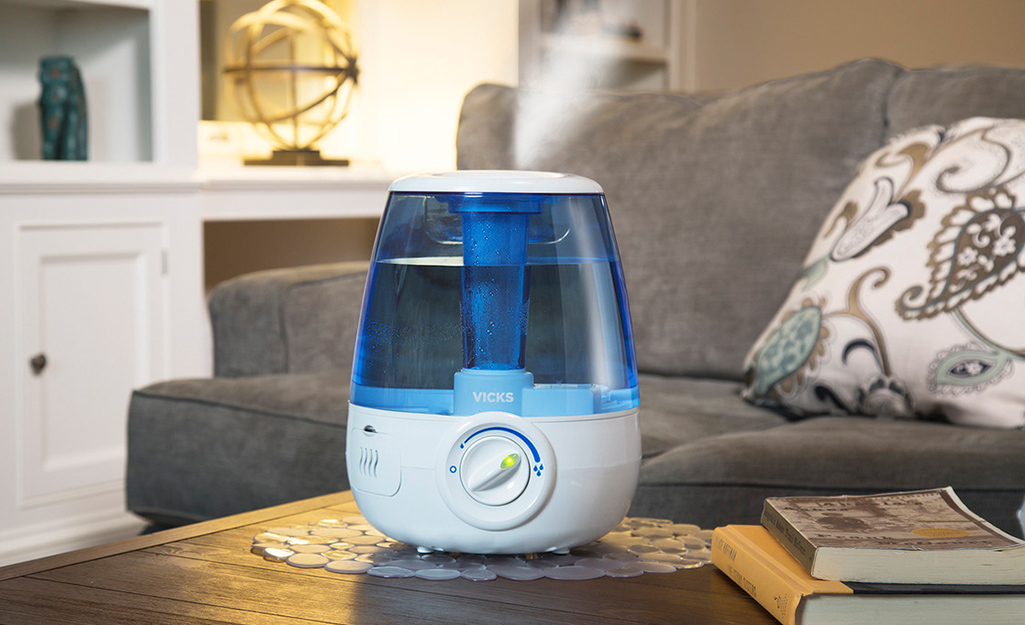
Evaporative humidifiers:
- Use a fan to blow dry air through a wick, which absorbs water from a refillable tank or the household water supply.
- Cool water from the wick evaporates into the air, boosting the humidity level; wick filters impurities out of the water.
- Common design for a tabletop, console and whole-house units.
- Must refill water tank one to two times a day and replace wick every 2 months.
- Relatively low power demands.
Warm Mist
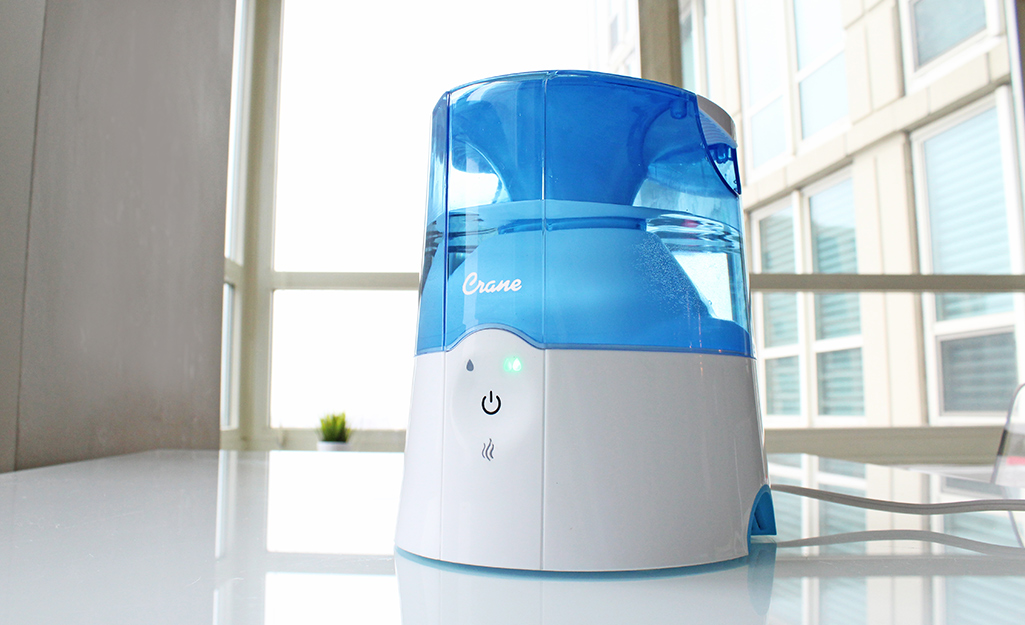
- Works like a tea kettle: Heating element boils water from a refillable tank or household water supply, generating steam that humidifies surrounding air.
- Removes impurities from the water, producing clean saturated air.
- Steam helps keep rooms warm.
- Quiet operation.
- Water tank must be filled periodically, but there’s no wick to replace.
- May be necessary to clean unit regularly, as impurities from water can build up in the tank.
Tip: Vaporizers are small, low-output warm mist humidifiers. They have a built-in water reservoir, rather than a removable tank.
Ultrasonic
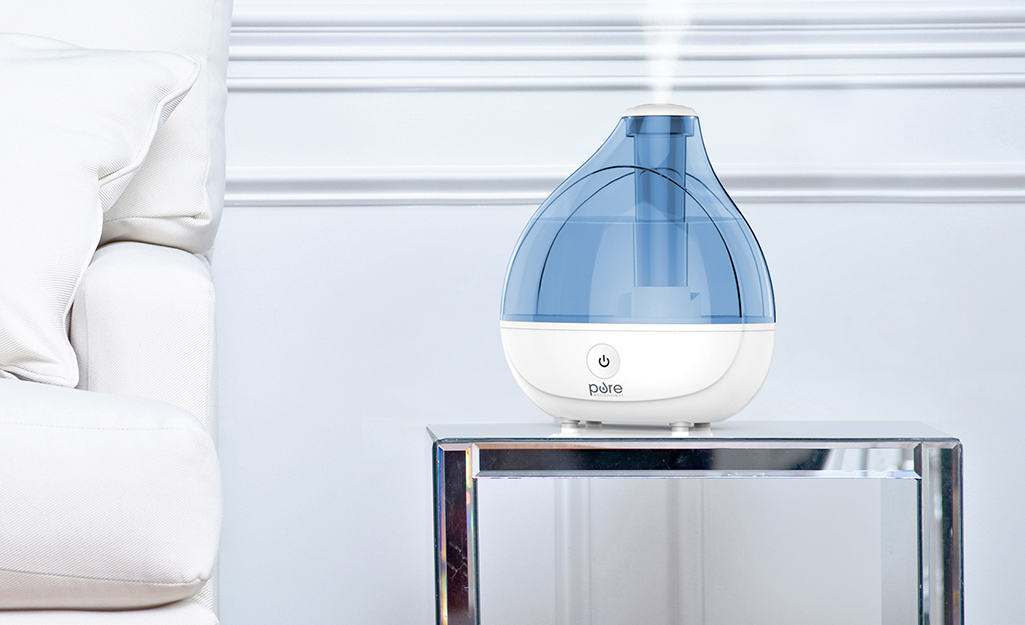
- A metal diaphragm vibrates at ultrasonic frequencies to break up water into a cloud of tiny droplets.
- Does not filter water, but demineralization cartridges can be added, as can heating options.
- Used in many tabletop models.
- Very quiet with relatively low power demands.
- Typically, the best humidifiers for bedrooms and nurseries.
- Tank must be refilled regularly, but there is no filter to replace.
Cool Mist Impeller
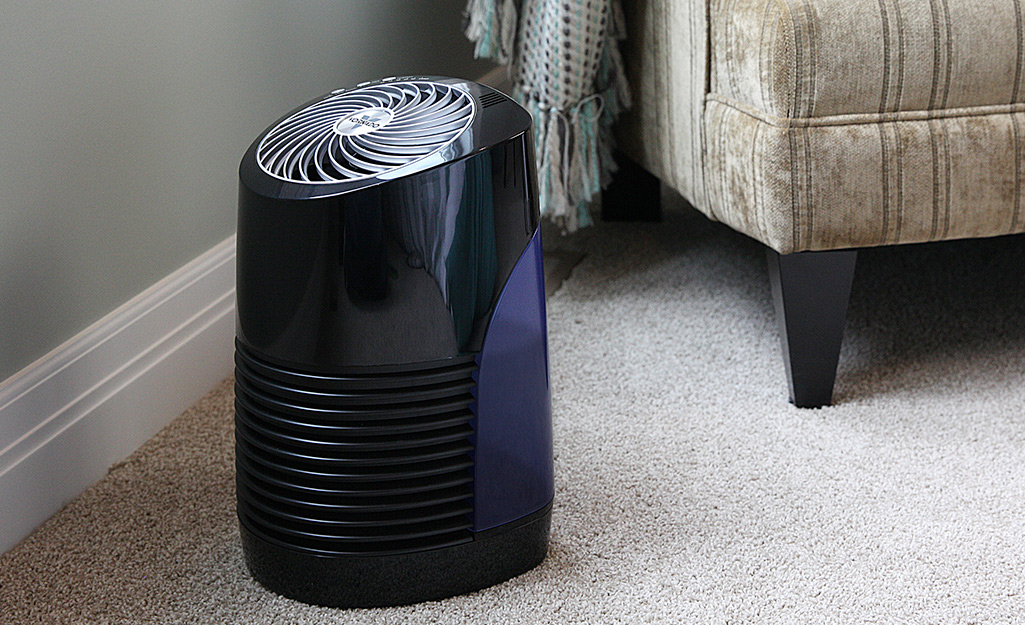
Cool mist impeller humidifiers:
- A spinning disc generates a fine mist of cool water.
- Does not filter water, so distilled water is recommended.
- Quiet; doesn’t use much power.
- For those with nurseries, you may determine the best cool mist humidifiers are also germ-free and have dishwasher-safe parts.
- No need to be refilled, and no filters to replace; clean tank regularly.
Benefits
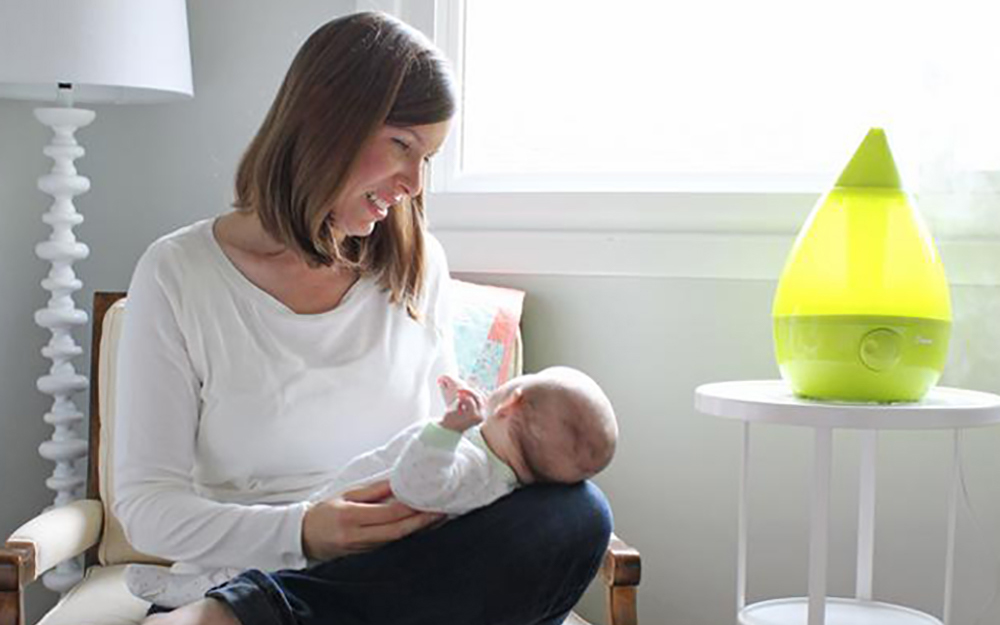
So, what does a humidifier do? And what are the major benefits?
Using a humidifier in your home is a good way to avoid common cold-weather illnesses as moisture helps to hinder the movement of germs. A humidifier may make it easier for babies or children with colds to sleep as it can help reduce coughing fits. In addition to the health benefits, using a humidifier in your home will make occupants feel a little warmer, thus reducing heating costs.
Different than air purifiers, which are designed to rid the air of allergens and reduce mold, humidifers control the humidity level. In some instances, you may opt to use these items together.
If you're already suffering from a cold, allergies or respiratory conditions, a humidifier will make the air easier to breathe. Adding moisture to the air also helps to reduce common conditions caused by dry weather, including:
- Scratchy, dry throat, eyes and skin
- Bloody noses
- Chapped lips
- Sinus headaches
Different types of humidifiers like cool mist, warm mist, vaporizers, ultrasonic and cool mist impeller humidifiers all boost the humidity with various methods. If you determine you need to extract moisture from the air in certain areas of your home, consider using a dehumidifier.






